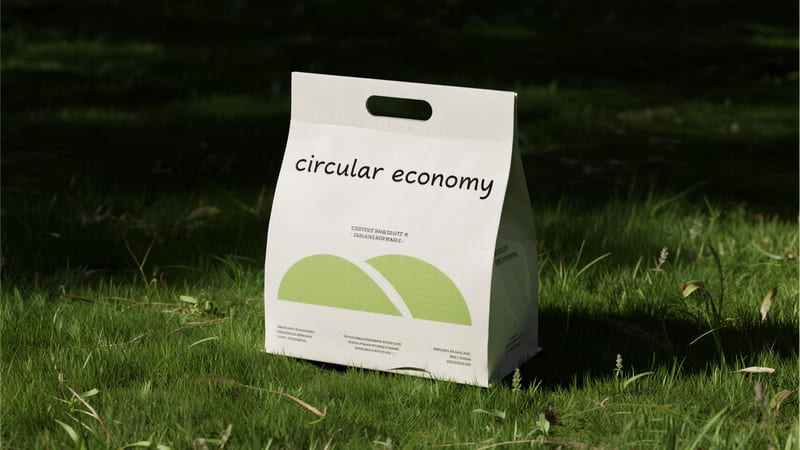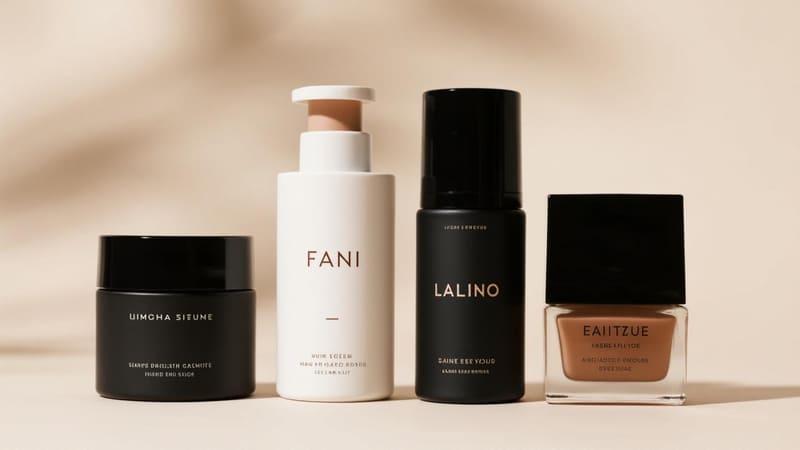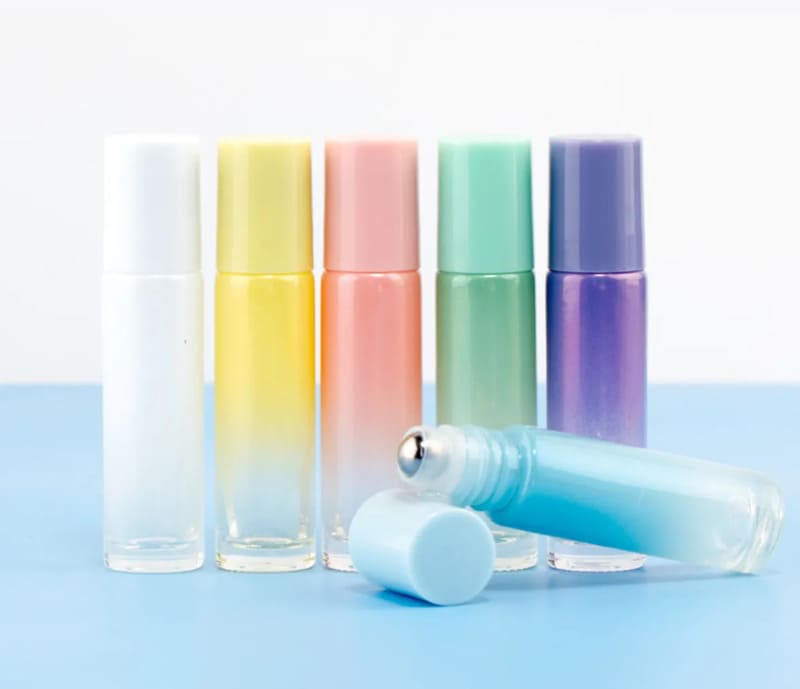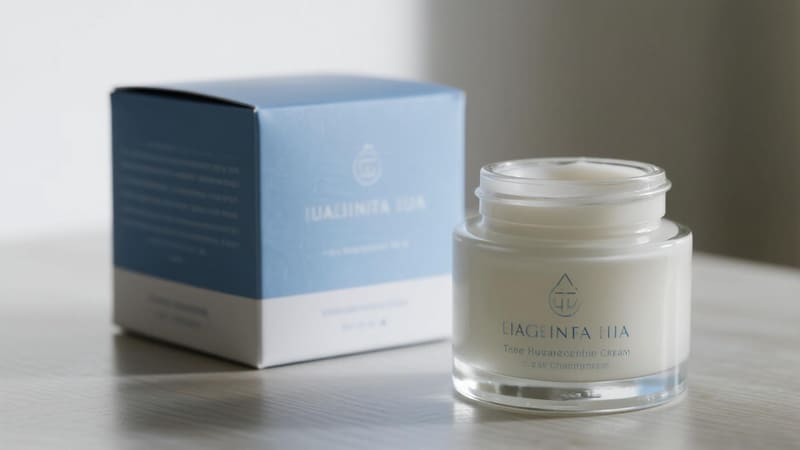Choosing the right cosmetic packaging supplier is a critical decision for your brand. Asking the wrong questions, or not enough of them, can lead to costly mistakes, delays, and packaging that doesn’t meet your needs or quality standards.
Key questions to ask a cosmetic packaging supplier include inquiries about their minimum order quantities (MOQs), lead times, material options, customization capabilities, quality control processes, sustainability practices, pricing structure, and experience with products similar to yours.

Finding a reliable packaging partner is like finding a key team member for your business. As a supplier with ShineTop for over 20 years, I’ve found that the best client relationships start with clear communication and the right questions. This helps ensure we’re a good fit and can meet your expectations. Let’s dive into what you should be asking.
What are the Issues with Cosmetic Packaging?
The cosmetic industry faces numerous packaging challenges. Being aware of these common pitfalls can help you ask targeted questions to ensure your supplier can navigate them effectively.
Common issues with cosmetic packaging include sustainability concerns (excess waste, non-recyclable materials), product compatibility problems (reactions between formula and packaging), ensuring product protection during transit, meeting complex regulatory labeling requirements, and achieving brand differentiation in a crowded market.
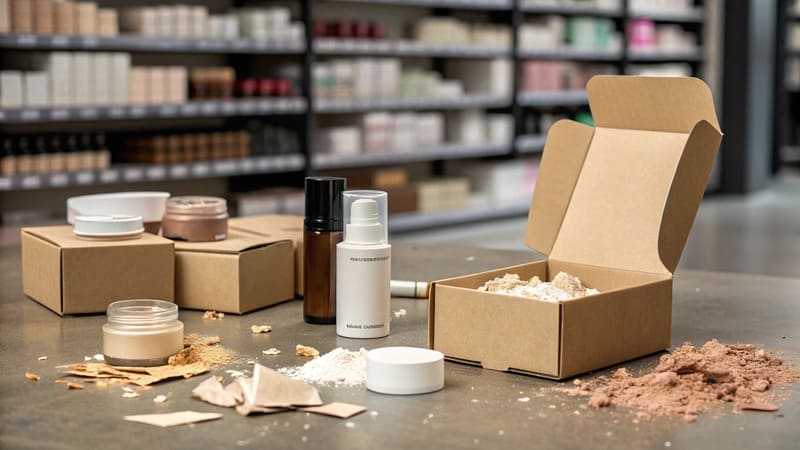
The world of cosmetic packaging isn’t without its hurdles. Understanding these potential problems will help you frame better questions for potential suppliers.
Key Challenges in Cosmetic Packaging:
-
Sustainability & Environmental Impact:
- Excessive Waste: Over-packaging and use of single-use plastics contribute to landfill and ocean pollution.
- Recyclability: Many complex cosmetic packages (e.g., mixed materials, small parts, dark plastics) are difficult or impossible to recycle through standard municipal systems.
- Material Sourcing: Ensuring materials are ethically and sustainably sourced (e.g., FSC-certified paper, conflict-free minerals).
- Relevant Question for Supplier: "What sustainable packaging options do you offer, and can you provide data on their environmental impact or recyclability?"
-
Product and Packaging Compatibility:
- Chemical Reactions: Formulations can react with certain plastics or coatings, leading to product degradation, discoloration, or leaching of harmful substances.
- Barrier Properties: Ensuring the packaging adequately protects sensitive ingredients from oxygen, light, or moisture.
- Relevant Question for Supplier: "What is your process for ensuring compatibility between our formulation and your packaging materials? Do you offer compatibility testing services or guidance?"
-
Product Protection & Durability:
- Damage During Transit: Inadequate packaging can lead to breakage, leakage, or contamination during shipping and handling.
- Functionality Over Time: Ensuring pumps, sprayers, and closures continue to work correctly throughout the product’s life.
- Relevant Question for Supplier: "How do you ensure your packaging protects products during shipping? What quality checks are in place for functional components?"
-
Regulatory Compliance & Labeling:
- Complex Requirements: Ingredient lists, net weight, manufacturer details, warnings, and batch codes must be accurate and legible. Regulations vary by region.
- Space Constraints: Fitting all required information onto small cosmetic packages can be challenging.
- Relevant Question for Supplier: "Are you familiar with the cosmetic labeling regulations in [Your Target Market(s)]? Can your printing capabilities accommodate detailed information on small items?"
-
Brand Differentiation & Aesthetics:
- Standing Out: In a saturated market, packaging must be eye-catching and memorable.
- Maintaining Quality Perception: Ensuring the packaging quality matches the product’s price point and brand image.
- Relevant Question for Supplier: "Can you show examples of packaging you’ve produced for brands similar to ours or with the aesthetic we’re aiming for? What customization options (finishes, printing techniques) do you offer?"
Anna, a cosmetics manufacturer in Thailand, faced issues with product leakage early in her career due to poorly chosen stock packaging. When she partnered with us at ShineTop, her questions about our quality control for closures and our experience with her types of formulations were crucial.
What is the Best Packaging for Cosmetics?
Every brand wants the "best" packaging, but this term is subjective. What’s best for a luxury serum isn’t best for a budget-friendly lip balm. Defining "best" for your brand is key.
The "best" packaging for cosmetics effectively protects the product, aligns with the brand’s identity and values, offers a positive user experience, meets regulatory requirements, and is achievable within the brand’s budget. Material, design, and functionality are all critical components.
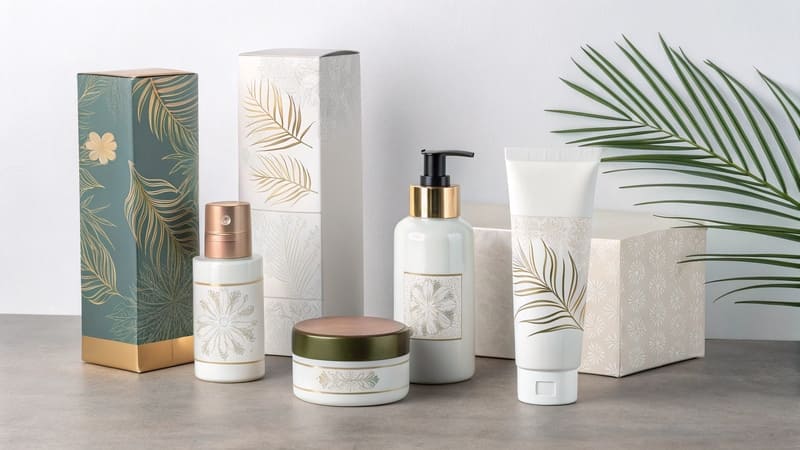
The "best" packaging is a strategic blend of multiple factors tailored to your specific product and brand. It’s not a one-size-fits-all answer.
Questions to Help Determine the "Best" Packaging with a Supplier:
-
Regarding Product Protection & Compatibility:
- "What materials do you recommend for my product type [e.g., water-based serum, oil-based balm, powder] and why?"
- "Do you offer airless packaging options for sensitive formulations?"
- "What are the barrier properties of the materials you suggest against oxygen, UV light, and moisture?"
-
Regarding Brand Alignment & Aesthetics:
- "How can your packaging options help convey our brand’s message of [e.g., luxury, natural, clinical, playful]?"
- "What printing and finishing options (e.g., foil stamping, embossing, matte/gloss lamination, spot UV) do you offer to enhance the design?"
- "Can you provide samples of different materials and finishes?"
-
Regarding Functionality & User Experience:
- "What types of dispensing options (pumps, sprays, droppers, sifters) are available for this container type?"
- "How do you ensure ease of use and functionality of closures and dispensers?"
- "Do you have options for travel-sized or sample packaging?"
-
Regarding Sustainability (if important to your brand):
- "What are your most sustainable packaging solutions for my product type?"
- "Can you provide details on the recycled content, recyclability, or compostability of these options?"
- "Do you offer refillable packaging systems?"
-
Regarding Budget & Logistics:
- "What is the price per unit at different order volumes (MOQ, 5k, 10k units)?"
- "Are there any one-time setup fees for molds or printing plates?"
- "What are your typical lead times for production and shipping?"
Mohammed, my client from Iraq who creates custom gift sets, always asks detailed questions about the perceived luxury of materials and the precision of custom inserts. For him, the "best" packaging must create a high-end unboxing experience for his customers.
What is the Most Sustainable Packaging for Cosmetics?
Sustainability is no longer a niche concern; it’s a mainstream demand. Brands are actively seeking eco-friendly packaging, but "greenwashing" is a risk. You need real sustainable solutions.
The "most" sustainable packaging for cosmetics often involves a combination of strategies: using materials with lower environmental impact (e.g., PCR plastics, glass, FSC-certified paper, mono-materials), designing for recyclability or compostability, offering refillable systems, and minimizing overall packaging (lightweighting).
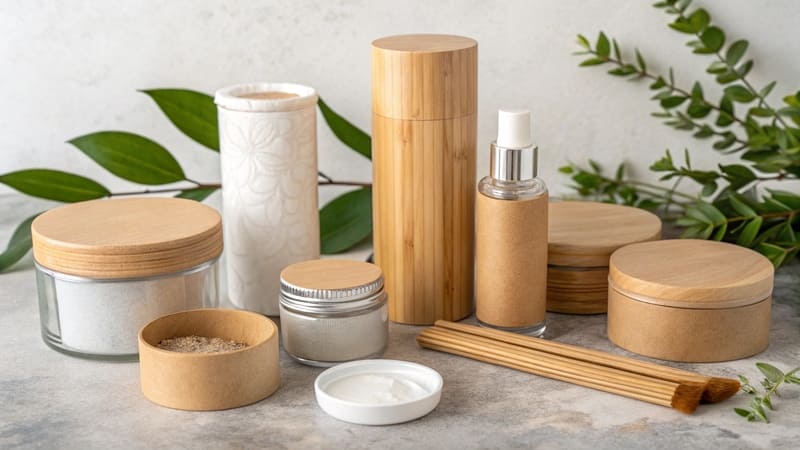
Achieving truly sustainable packaging is a complex journey, not a single destination. It involves evaluating the entire lifecycle of the package.
Questions to Ask Suppliers About Sustainable Packaging:
-
Material Sourcing & Composition:
- "What percentage of post-consumer recycled (PCR) content can you offer for plastic containers [e.g., PET, PP, PE]?"
- "Are your paper-based materials FSC-certified or from other sustainably managed forests?"
- "Do you offer bio-based plastics or compostable packaging options? If so, what are their end-of-life requirements (industrial vs. home composting)?"
- "Can you provide documentation or certifications for your sustainable material claims?"
-
Design for Recyclability/Disposal:
- "How do you design packaging to improve its recyclability (e.g., use of mono-materials, easily removable labels, avoiding problematic additives like carbon black in plastics)?"
- "Do you have experience with designing packaging for existing recycling streams in [Your Target Market(s)]?"
- "What are your recommendations for clear on-pack disposal instructions for consumers?"
-
Refillable & Reusable Systems:
- "Do you offer stock or custom refillable packaging systems (e.g., jars with refill pods, bottles designed for easy refilling)?"
- "What materials are used for the refill components, and how do they compare in environmental impact to single-use packaging?"
-
Minimization & Lightweighting:
- "Can you help us design packaging that uses less material without compromising product protection (lightweighting)?"
- "What are your thoughts on minimalist packaging designs for our product type?"
-
Supplier’s Own Sustainability Practices:
- "What sustainability initiatives has your company implemented in its own manufacturing operations (e.g., renewable energy use, waste reduction programs)?"
Here’s a quick comparison of common sustainable approaches:
| Sustainable Approach | Pros | Cons |
|---|---|---|
| PCR Content | Reduces virgin plastic, supports circular economy | Can have slight color variations, availability can vary |
| Glass | Infinitely recyclable, premium feel | Heavier (higher transport emissions), breakable |
| Refillable Systems | Significantly reduces overall packaging waste | Higher initial cost, requires consumer behavior change |
| Mono-materials | Easier to recycle | May limit design or functional options |
| Lightweighting | Reduces material use and transport emissions | Can sometimes compromise perceived quality or durability |
At ShineTop, we’re committed to sustainability and have invested in developing a range of eco-friendly options, including PCR packaging and lightweight designs, because we know this is crucial for our clients and the planet.
How to Find a Packaging Supplier?
Knowing what questions to ask is only half the battle. You first need to identify potential suppliers who are a good fit for your brand’s needs and scale.
To find a packaging supplier, utilize online search engines (Google, etc.), B2B platforms (Alibaba, ThomasNet, Europages), industry directories, trade shows, referrals from your network, and by checking the packaging of competitor or complementary brands (sometimes suppliers are credited).
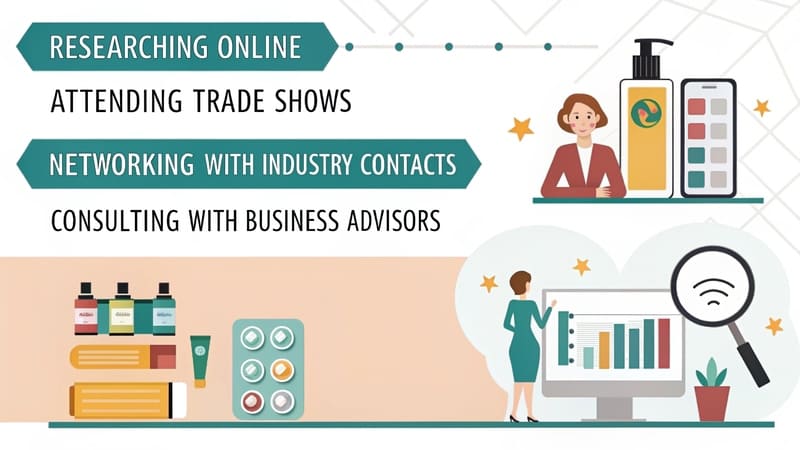
Finding the right supplier requires some research and networking. Here are several effective methods:
Strategies for Finding Packaging Suppliers:
-
Online Search Engines:
- Use specific keywords like "cosmetic packaging supplier," "custom cosmetic bottles China," "eco-friendly makeup packaging USA," "luxury perfume boxes Europe."
- Look beyond the first page of results.
-
B2B Platforms:
- Global: Alibaba, DHGate, Made-in-China (good for sourcing from Asia, including ShineTop).
- Regional/Industry-Specific: ThomasNet (North America), Europages (Europe), and other platforms focused on manufacturing or packaging.
- Pros: Wide selection, direct contact with manufacturers.
- Cons: Requires careful vetting of suppliers.
-
Industry Trade Shows & Exhibitions:
- Examples: Cosmoprof (worldwide), Luxe Pack (worldwide), Packaging Innovations.
- Pros: Meet suppliers face-to-face, see and touch packaging samples, discover new innovations.
- Cons: Can be expensive to attend.
-
Professional Networks & Referrals:
- Ask for recommendations from other brand owners, cosmetic chemists, contract manufacturers, or industry consultants.
- LinkedIn groups and industry forums can also be sources of referrals.
-
Industry Associations & Directories:
- Organizations like the Independent Beauty Association (IBA) or packaging-specific associations often have member directories.
-
Competitor Research (Indirectly):
- Examine the packaging of brands you admire or compete with. Sometimes, especially with smaller or transparent brands, they might mention their packaging partners or the origin of their packaging. This can give you leads.
Vetting Potential Suppliers:
Once you have a list, vet them by:
- Checking their website for professionalism, product range, and case studies.
- Looking for reviews or testimonials.
- Asking for samples.
- Starting with a small trial order if possible.
- And, of course, asking the detailed questions outlined in this guide!
As a global supplier, ShineTop is present on several B2B platforms and we regularly participate in major industry trade shows. We also get many clients through referrals, which speaks to our commitment to quality and service.
Conclusion
Asking thoughtful, detailed questions is crucial when selecting a cosmetic packaging supplier. Focus on their capabilities, quality control, sustainability, costs, and experience. This due diligence will help you find a reliable partner like ShineTop to bring your brand vision to life.



